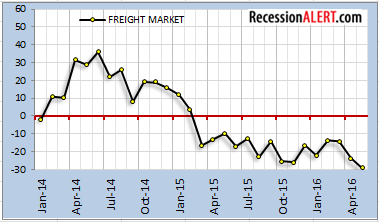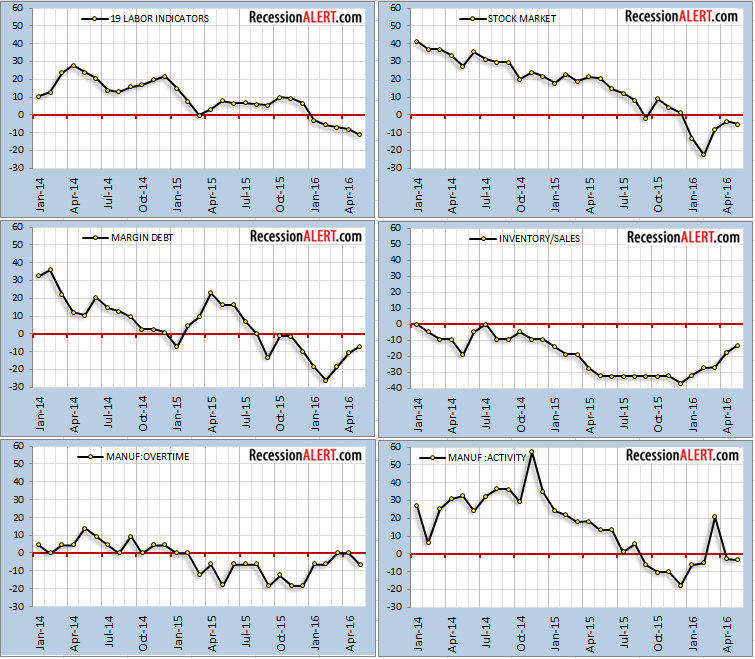The #Brexit vote caught the consensus view off-guard and stock markets, currencies and commodity prices have made large responses. This may be bringing up thoughts if Brexit could be the external shock that marks the decent of the U.S economy.
Whilst we will not entertain making predictions on this complex matter, we can however state that the U.S economy is the most vulnerable it has ever been since the 2008 financial crises. This is at least according to our composite of 21 leading indicators as at May 2016 shown below:
From the green diffusion line in the chart above we note that more than 50% (eleven) of these indicators are now in recession territory, with the overall (black) composite hovering near contraction (the red line). Eleven of the 21 indicators are long-leading and ten are short-to-medium leading. Six (60%) of the short-to-medium leading indicators are in recession and five (45%) of the long-leading indicators are in recession territory.
Whilst the above analysis may appear bleak, a probability model taking all indicators into account only forecasts a 4.8% probability of recession within the next 6-12 months:

Visitations of the green diffusion index to the 50% mark and of the black composite to the red zero mark have been frequent in the past without leading to recession, but the fact of the matter is that these are periods of extreme vulnerability of the economy to internal or exogenous shocks or geopolitical events. With no margin of safety, or buffer, it doesn’t take a very large shock to tip many of the indicators past the point of no return, resulting in contagion to other indicators and finally the whole economy.
The long-leading components of our composite of leading indicators that are currently in trouble are:


The short-leading components that are displaying signs of distress are:



Comments are closed.